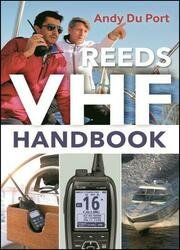 Название: Reeds VHF Handbook
Название: Reeds VHF HandbookАвтор: Andy Du Port
Издательство: Reeds, Bloomsbury Publishing
Год: 2021
Страниц: 161
Язык: английский
Формат: pdf (true), epub
Размер: 48.3 MB
The Reeds VHF Handbook is an accessible, user friendly but comprehensive guide to marine VHF radio that helps users quickly get up to speed with all the functions on their equipment. Straightforward explanations and tips describe the leisure VHF DSC radio system in detail and its place within GMDSS.
This brand new book incorporates all the information required to pass the Short Range Certificate, which is compulsory for anyone using a VHF DSC radio, and forms part of the process of obtaining the Day Skipper qualification. The book covers radio procedure, channel allocation, VHF radio theory and more, along with a full explanation of GMDSS, including details on EPIRBs, SARTs and Navtex.
The Reeds VHF Handbook is an essential onboard reference, and set to become the standard work on the subject.
Thirty or forty years ago it was rare for a VHF (Very High Frequency) radio to be fitted in small craft. Now you would be hard pressed to find a vessel of any size without one. They are routinely carried in sailing yachts, motor cruisers, dinghies, RIBs, kayaks and almost anything else that floats. However, before you can operate one you must hold a Short Range Certificate (SRC).
A VHF radio is not only for use in emergencies. You can use it to monitor shipping movements, obtain weather forecasts, arrange your berth in a marina or simply call your chum to decide where to anchor for lunch. Because VHF radios are so widely fitted, the airwaves have become increasingly busy, to the extent that safety can be compromised because essential transmissions are ‘lost in the noise’. For this reason there are rules and regulations which we all have to obey. Radios and operators must be licensed, and it is in everyone’s interest that standardised procedures are adopted to reduce the length of transmissions and allow urgent messages to be received, understood and acted upon as quickly as possible.
Cospas/Sarsat is an international network of satellites which relay transmissions from distress beacons such as EPIRBs and PLBs (more about these later) to Search and Rescue (SAR) authorities back on Earth. The system can receive signals from distress beacons which transmit on 406MHz. Older beacons which transmit on 121.5MHz or 243MHz rely on being received by aircraft and associated rescue assets. They are not compatible with Cospas/Sarsat unless they also transmit on 406MHz. If you really want to know, COSPAS is a Russian acronym for COsmicheskaya Sistema Poiska Avariynich Sudov; SARSAT, rather more comprehensibly, stands for Search and Rescue Satellite-Aided Tracking.
INMARSAT is a British satellite communications system which covers all areas except the polar regions and can be used to transmit distress messages. It is thus part of GMDSS, but for our purposes it is of passing interest.
“Radio technology is becoming more complicated, but this guide will demystify the equipment. The book covers radio procedure, channel allocation, VHF radio theory and more, along with a full explanation of GMDSS, including details on EPIRBs, SARTs and Navtex.” -Classic Boat
Скачать Reeds VHF Handbook